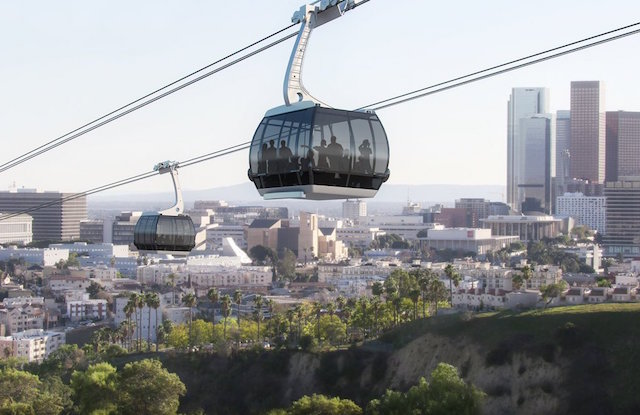Last April, the Los Angeles Dodgers and Aerial Rapid Transit Technologies LLC (ARTT) unveiled plans for an aerial rapid transit connection — gondola system — that will run from Union Station to Dodger Stadium.
Once complete, the system will provide the first permanent public transit link to Chavez Ravine and will only take around five minutes of travel time. A major hurdle toward completion of the project was recently reached as the Metro Board of Directors agreed to move ahead with the environmental review process.
The unanimous vote paved the way for to Metro agree to be the lead agency for the project’s California Environmental Quality Act review.
“We look forward to continuing to advance this innovative and sustainable—privately-funded—transportation project and appreciate the continued support of the Los Angeles Dodgers for this exciting opportunity to expand transportation options for Dodger fans,” project manager Martha Welborne said in a statement provided to DodgerBlue.com
The proposed system will be able to move more than 5,000 passengers per hour, per direction, and should help greatly with the traffic both around Dodger Stadium and downtown Los Angeles. Under current plans, each cabin would hold around 30-40 passengers, and the system will serve all Dodgers home games and special events at Dodger Stadium.
It can also possibly operate daily to serve visitors seeking to enjoy the scenic gondola experience. At present time, the existing Metro system only provides a game-day shuttle connection between Union Station and Dodger Stadium.
Total project costs are estimated to be $125 million, and ARTT remains committed to privately finance the clean-energy project, the cost of the studies and also reimburse Metro for its staff time and services.
The review process will continue through 2021 with a strong commitment from ARTT and all stakeholders for a robust public engagement process. The aerial system is expected to begin operations in 2022.










